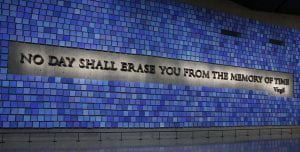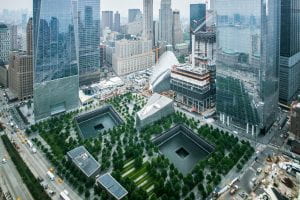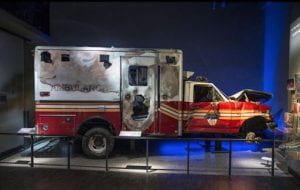
Today marks the 19th anniversary of one of the darkest days in American history: the attach on The World Trade Center known only by its date, 9/11. While many years ago now have past, it still feels like yesterday to many people and indeed is only yesterday when speaking archaeologically. However, archaeologist played an important role shortly after the event and still work at the site and in aspects relating to the event.
Forensic anthropologists, some of whom come from archaeological backgrounds and many who have had archaeological training, worked tirelessly from the day of the attach through July 2004 to recover and identify 19,970 human remains. This recovery operation acted similarly to archaeological excavations; sifting through piles of debris and identifying every bone or charred piece of metal. After the collection, the remains were identified using DNA analysis and returned to their families.
Ten years after the catastrophe, an 8-acre, outdoor tree-covered 9/11 Memorial Plaza was created on Ground Zero. This plaza contains two pools

Aerial image of the 9/11 Memorial Plaza.
surrounded by the name of the 2,977 victims of the World Trade Center, Pentagon, and Flight 93. A year later the 9/11 Memorial Museum was opened. This museum treats Ground Zero as it would an archaeological site, using artifacts from the disaster, location, and personal stories to transport visitors to the event. Artifacts (rubble) from the Towers were repatriated back to the site and placed in public areas for people to walk through. These include large pieces of steel, an elevator motor, fire engine from a company that lost 11 members, and a broadcast antenna from the North Tower. These large artifacts and the in situ structural columns create an atmosphere similar to the ruins of other archaeological sites were visitors ask the question “what happened here”. The museum structure itself is called Reflecting Absence and is located below the ground, drawing attention not only to its absence but the absence of the Towers themselves. Exhibits use photographs, footage, and personal testimonies to create a soundscape allowing witnesses to narrate the exhibits rather than signs. This is a feature that is not possible at many archaeological sites whose events took place hundreds or thousands of years ago.

The exposed hull of the 18th century ship. Source: Archaeology Magazine
Archaeology had one final interaction with Ground Zero. In 2010 during the construction of a Vehicle Security Center, archaeologists monitoring the project discovered a portion of an 18th century trade ship in exceptional condition. The 32-foot-long portion of this 70-foot-long brigantine vessel likely brought livestock, wood, and food to the Caribbean and brought back sugar and other goods. The vessel was likely brought to shore for repairs but when this section was deemed unsalvageable it was discarded. During this time, the shoreline was expanded. The clay-rich fill soil used to expand the shoreline covered the vessel creating an anaerobic environment perfect for preservation. It is rare to find these vessels in such incredible condition. The archaeologists decided the best course of action was to carefully excavate, dismantle, and preserve the ship for research. However, because of the need to continue construction, the team had only 5 days to complete this task.
9/11 was a horrific event that sparks a huge chain of  conflicts that are still going on today. Every single person, profession, and heart was impacted by this event. There are those heroic first responders who rushed to the scene risking and even giving up their lives to save others, the courageous passengers of Flight 93 and other regular people who acted to help others, and all those people to helped in the aftermath of the tragedy. This even extended to archaeologists who aided in recovery and were allowed to preserve the memory of the event for all time. Thank you so those who helped others during this time and who still help others today.
conflicts that are still going on today. Every single person, profession, and heart was impacted by this event. There are those heroic first responders who rushed to the scene risking and even giving up their lives to save others, the courageous passengers of Flight 93 and other regular people who acted to help others, and all those people to helped in the aftermath of the tragedy. This even extended to archaeologists who aided in recovery and were allowed to preserve the memory of the event for all time. Thank you so those who helped others during this time and who still help others today.
Follow IUP Anthropology on Facebook, Twitter, and Instagram
Source: Kerrigan, Ian 2011 Exhibiting 9/11: Interpreting Archaeology and Memory at the World Trade Center Site. Exhibitionist, Fall: 20-24.